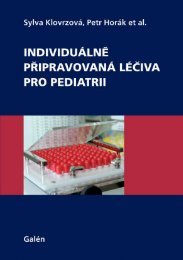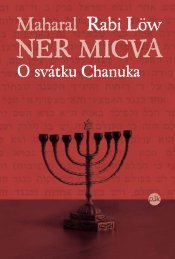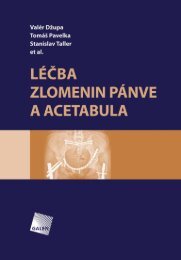ORBIS SENSUALIUM PICTUS - Databook.cz
ORBIS SENSUALIUM PICTUS - Databook.cz
ORBIS SENSUALIUM PICTUS - Databook.cz
Erfolgreiche ePaper selbst erstellen
Machen Sie aus Ihren PDF Publikationen ein blätterbares Flipbook mit unserer einzigartigen Google optimierten e-Paper Software.
waggons and various types of ships. The last chapterof the section reminds us that beside successand various improvements this effort is sometimeslinked with failure – in case of the bark’s shipwrecksome people are saved but others die and end miserablyand their goods and chattels sink to the bottomof the sea.The following section is also thematically interconnected.It deals with communication andspreading thoughts concerning e.g. the art of writing,books, printing houses, schools. The fact thatComenius added music to verbal art as anotherartistic manifestation was undoubtedly linked withhis own hymnographic activity, which resulted inthe Hymn book edited in the year 1659 in Amsterdam.In Orbis pictus philosophy is a summary of allthe sciences in which the science of numbers holdsa significant position because it is the preconditionfor research into other spheres of science. Thenfollows geodesy and the study of extraterrestrialbodies and phenomena. Some schematic drawingsapproach the contemporary astronomical knowledge,but from the geocentric aspect of course(which used to be corrected by the later editors).The whole set concerning scientific knowledgecloses with the then obtaining map of Europe.Comenius included the moral formation ofman into the section on ethics, into which he addedthe general information on morality as well as thewhole set of human virtues: caution, diligence, restraint,bravery, patience, humanity, righteousnessand generosity. Ethics thus includes the directionsfor man on how to control himself.The section concerning social life begins withmarriage, which is its fundamental part. Then followthe higher parts, their operation and administration.Neither did Comenius exclude jugglers,theatre and various plays from the life of the society.The part concerning the secular rule closeswith kingdom, its administration and military matters.Than follows the section leading man to thehighest authority. Man approaches God throughreligions, which Comenius names in an evolutionaryline from Paganism, Judaism to Christianity,and in the end even to Mohamedanism, which ispresented as a mixture of all the religions mentionedbefore. Christianity is dealt with in the mostdetailed manner. For the other religions the matterof-factnessis symptomatic: void of any manifestationsof religious intolerance. In the last but onechapter on God’s justice Comenius warns againstsuperstitions, Satan’s intrigues and varicus sorcerers,who may put humans on the wrong path. Thework concludes with the Last Judgement, whichsecures eternal bliss for the righteous. And this isthe end of the whole cycle that starts with God andagain returns to Him.The educational cycle cited is in its substancea concrete didactic application of Comenius’ generalpansophic ideas, which later on found theirmost comprehensive expression in the author’swork On the remedy of matters human. Comenius’whole didactic system proceeds from a firmphilosophic foundation. Mention should here bemade of the fact that with us Comenius formerlyused to be presented as an outstanding pedagogueand his contribution as a philosopher and philosopherof education did not use to be fully appraised.His views were being creatively developed by theCzech unofficial branch of philosophic researchrepresented above all by Professor Jan Patočkaand his students.Comenius as a philosopher based his viewson the God-given order and he was convinced thatman had his place in that order.Man’s mission in this world is his cooperationin the direction towards the highest end. Comeniuslaid stress on man’s activity, his creative ability ofselfimprovement. Like none before him he realizedthat human labor and human creative activity wereof a high value.The way to the users of the workThe way of Comenius’ work to the reader wasin no way easy or swift. Comenius had his Latintext of the work ready as early as during his stay inHungary in Sarospatak (1650–1654), where he hadbeen invited by the Hungarian nobility to help withthe educational reform. For the Hungarian printinghouses there it wasnot easy to produce thepictures, and the Hungariantext parallel to theLatin text was not readyin time either. Comeniusthen sent the Lesznotext to Michael Endter,a printer in Nuremberg.That happened beforethe well-known fire thatdestroyed all the otherComenius’ manuscripts.This is how Orbis pictuswas saved. Endter fittedthe Latin text with a Germantranslation by Sigismondvon Birken. Orbissensualium pictus thus appeared for the first timein Nuremberg in two languages in 1650. Thanks tothe success of the work its second edition appearedas soon as 1659 and a number of further editionsfollowed, also in four languages with Italian andFrench translations, and in three languages witha Hungarian translation. In its Latin and Germanversion Orbis pictus spread quickly as a textbookin the towns of Northern and Central Germany.Orbis sensualium pictus also found quickly its wayto England and there it quickly became highly favoured.As early as 1659 Orbis pictus was edited inÚprava pro školy z r. 1870 / Bearbeitung für Schulenaus dem Jahre 1870 / The arrangement for schoolsfrom 1870 / Издание для школ 1870 г.London with a very interesting preface by CharlesHoole, who welcomed it as the realization of hisown thoughts. Other English translations are alsowell-known. The twelfth edition, which appearedthanks to William Jones, was printed in 1798 in NewYork. Orbis pictus became a much used and populartextbook in Denmark and Sweden. Its long life andeffectiveness were also due to its being adopted andenlarged according to the actual needs. Its worldwidepopularity culminated in the years 1670–1680.The spread of Orbispictus in Poland wasmainly due to the townWroclaw. Thanks to thecare of Kaspar Müller itappeared first in the year1667 in Latin, French,German and Polish translations.Many editions inthree languages, includingPolish, appeared laterand there also existed anedition in two languages,in Latin and Polish. Theeditors in Hungary andTransylvania based theirlater activity on Endter’sLatin, German and Hungarianversions. The Orbis’ Czech text was basedon the edition in four languages from the year1685 printed by Samuel Brewer’s printing house inLevoča. In that well-known edition the Latin, Germanand Hungarian texts are followed by a fourthtext, which is a mixture of not only Czech and CentralSlovak linguistic elements, but also a numberof Eastern Slovak elements similar to Polish, andeven the Polish elements themselves. The peculiarcharacter of this text representing the preparatoryphase of literary Slovak can be due to the collectivework on its genesis, the stay of one of the au-26 27
















